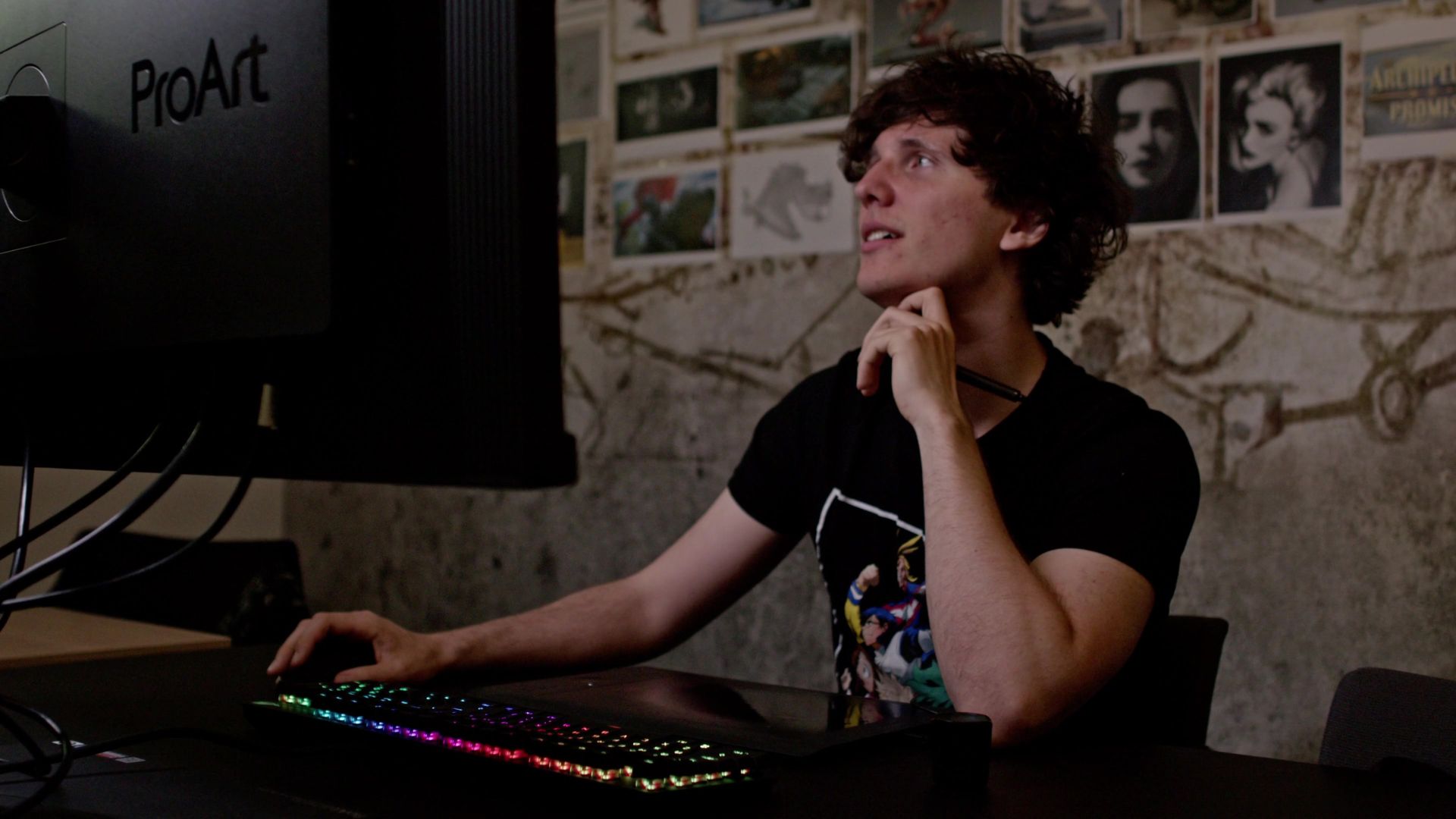
The lines between gaming and film technology are more blurred than ever. Films and series based on popular video games are increasing in popularity. The Last of Us is a great example of a big-screen hit by being one of the most successful game-to-TV adaptations yet to come.
The booming games industry
The gaming industry has experienced a surge in popularity and profitability in recent years. As technology advances and gaming platforms diversify, the industry continues to captivate millions of players worldwide. One of the reasons is the introduction of interactive storytelling when it comes to video games. The transition from a passive movie-watching experience to an immersive gameplay experience where players can influence their storylines has really captured the imaginations of many.
Making the next generation of triple-A gamers
We had an exciting opportunity to visit one of the best gaming schools in Europe (and, indeed, elsewhere), Breda University of Applied Sciences (BUAS), which is located south of the Netherlands. The school has emerged as a leading institution empowering aspiring game developers and designers to transform their passion for gaming into successful careers. BUAS offers a range of courses specifically tailored to meet the demands of the gaming industry, and with a commitment to providing hands-on experience, has become a hub for aspiring game developers from all over the world.
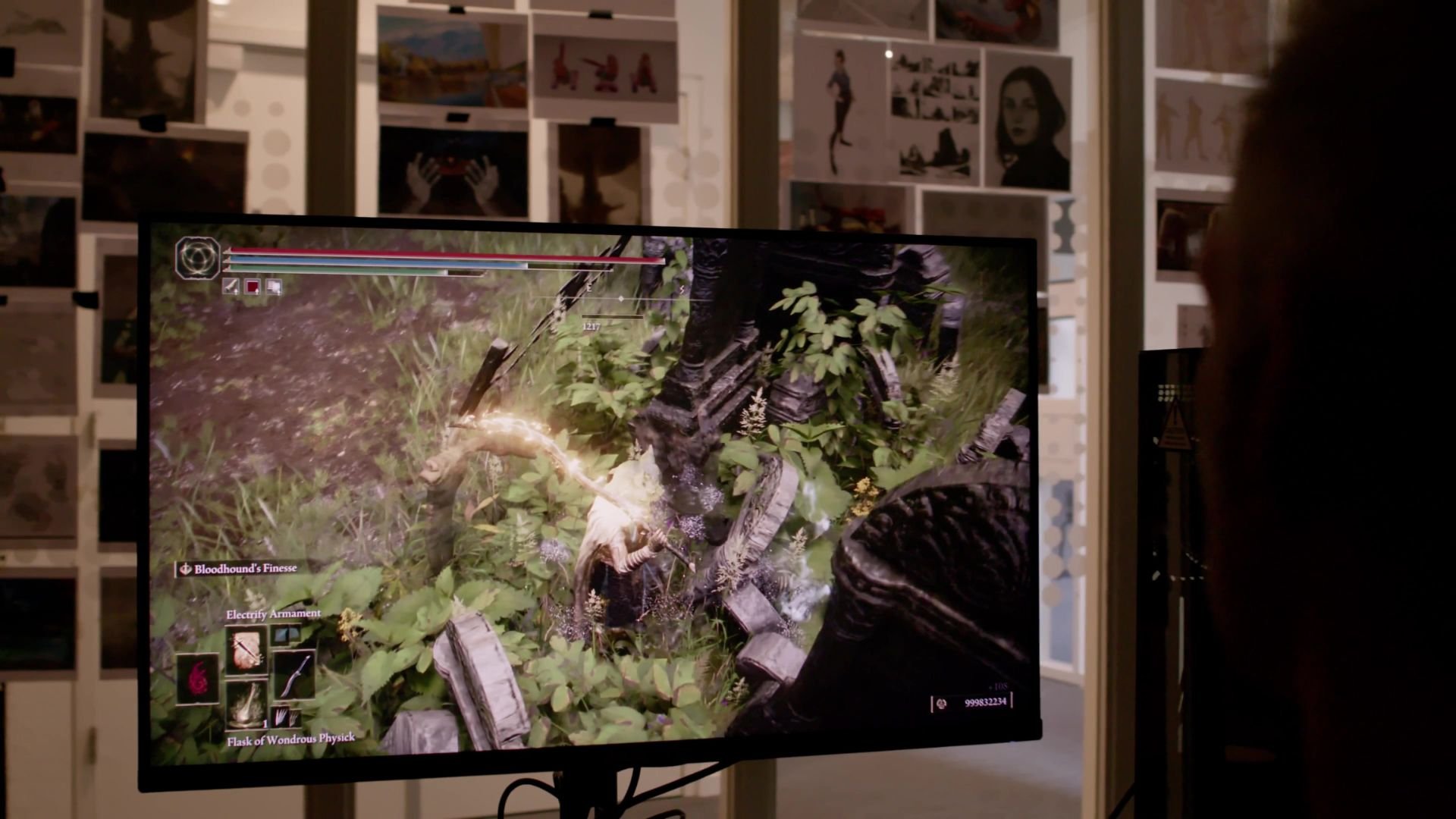
Technology is an essential part of games development at Breda University of Applied Sciences
Recognizing that successful games require a blend of technical expertise, artistic vision, and effective storytelling, the university offers a diverse range of courses around game creation. From programming and game design to game art and production, students have the opportunity to specialize in their area of interest while gaining a broad understanding of the entire game development process. BUAS focuses on facilitating students to become self-driven learners who are able to analyse a problem and use all the resources around them to find solutions to shape the future of gaming.
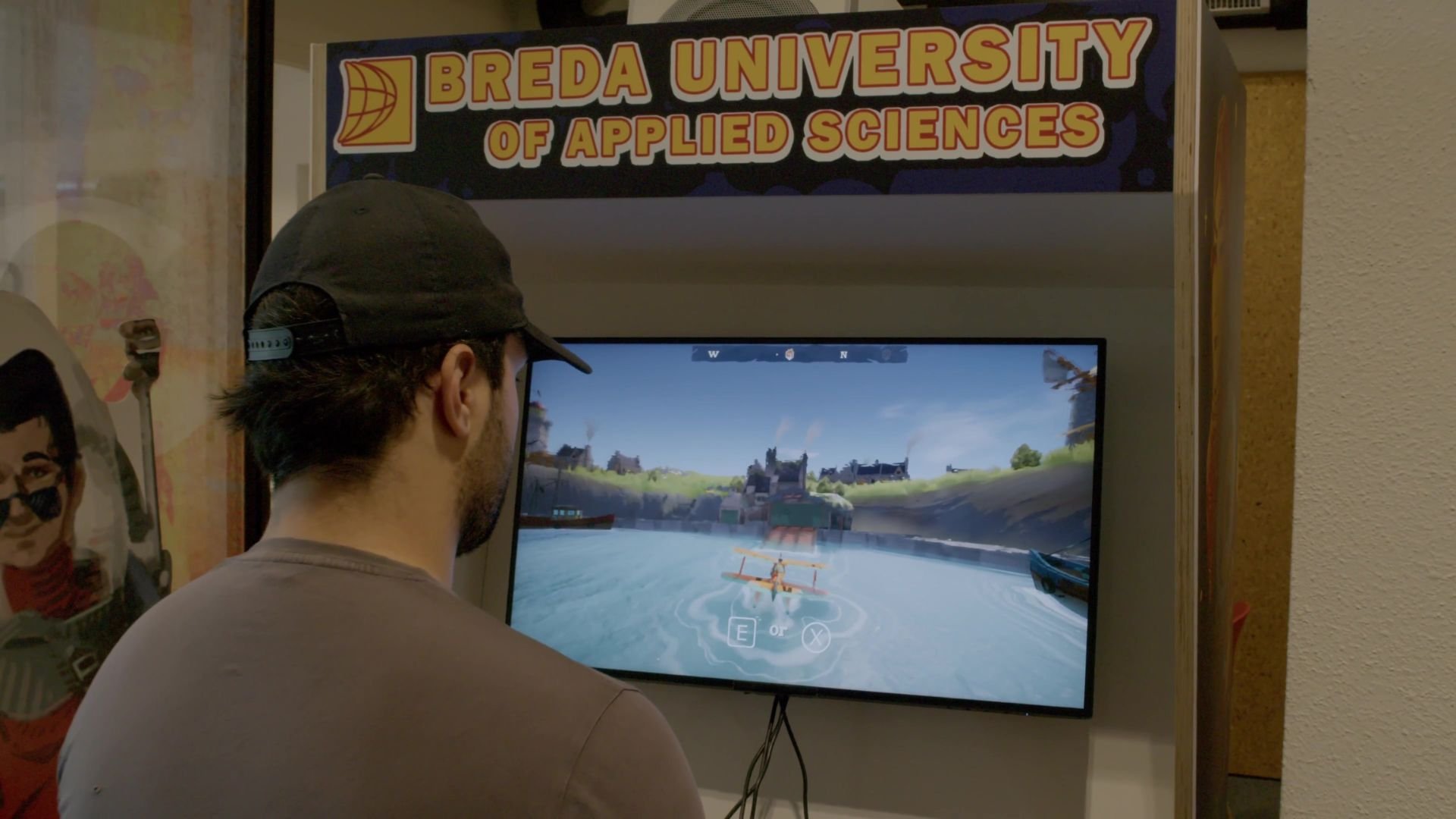
Facilities at BUAS offer the students the tools and hardware to develop their skills at an industry level
Pushing the boundaries of what is possible
As a result of the vast popularity of the games industry, Jeremiah van Oosten, Programming Educational Manager at Breda University of Applied Sciences, says that gamers are really pushing the boundaries of what is possible in games. “They want more pixels, higher refresh rates, more colors and darker darks and whiter whites. So we really need to have the highest technology available to the students in order for them to test their games and to make sure that their game is going to run as well as it can,” says van Oosten. This is why the school needs to ensure they are staying innovative with the equipment they are providing for their future talent.
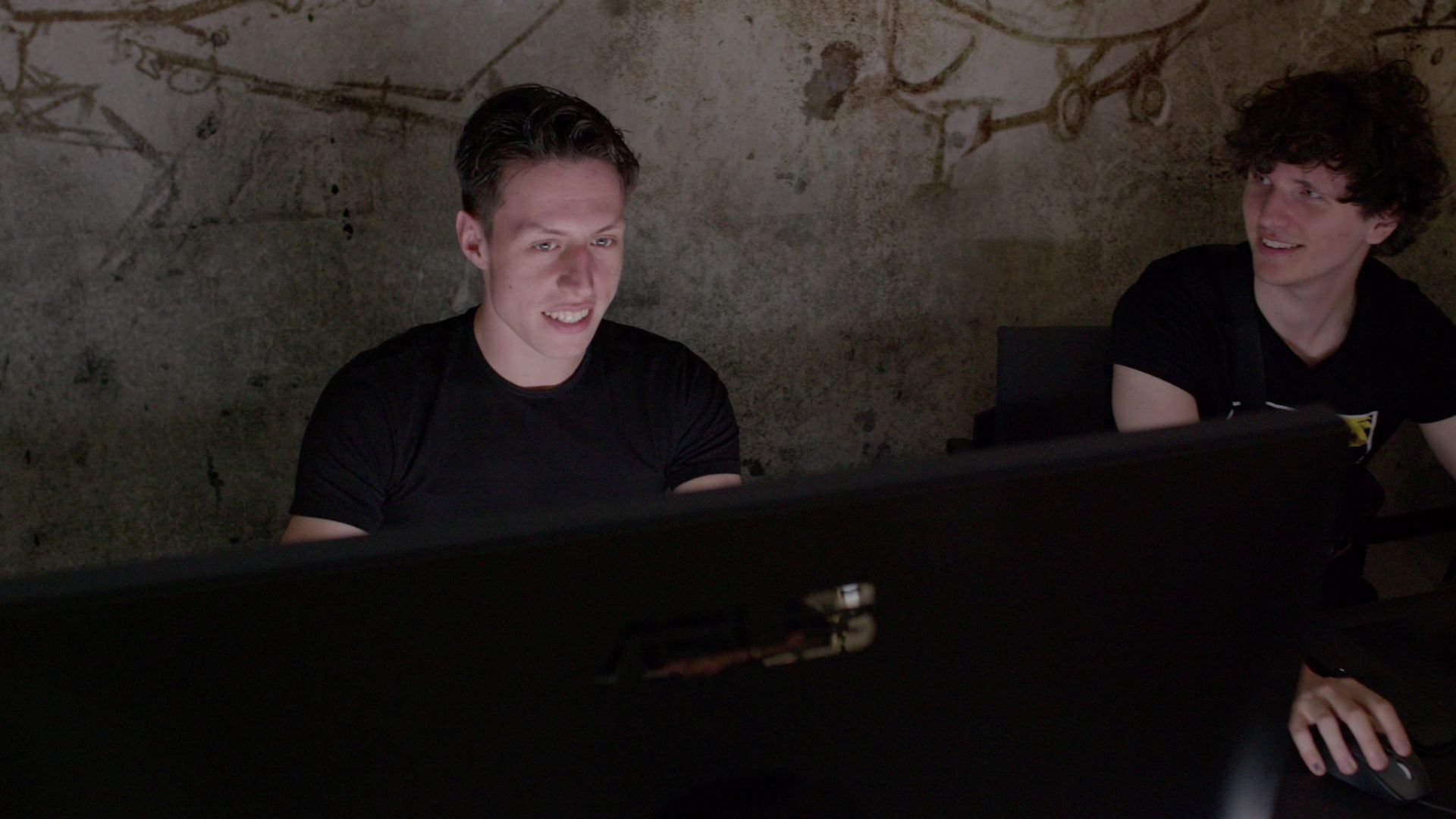
Running games in Unreal Engine
Gaming technology and real-time 3D tools are helping game developers and filmmakers, not only to make film production easier and faster but also to provide more opportunities for filmmakers to enhance their visual effects capabilities. These powerful game engines require a lot of processing power when it comes to hardware.
In its game labs, BUAS uses the ASUS ProArt Display PA348CGV monitor to test its games. Working in Unreal Engine, it is very important to have a fast and responsive monitor. With a 120Hz refresh rate, the students can profile their games and ensure they will run at the best quality on the end user’s computer. The monitor comes with 98% color space coverage of the DCI-P3 and 400nits of brightness, which means students can test the peak brightness in areas that matter the most.
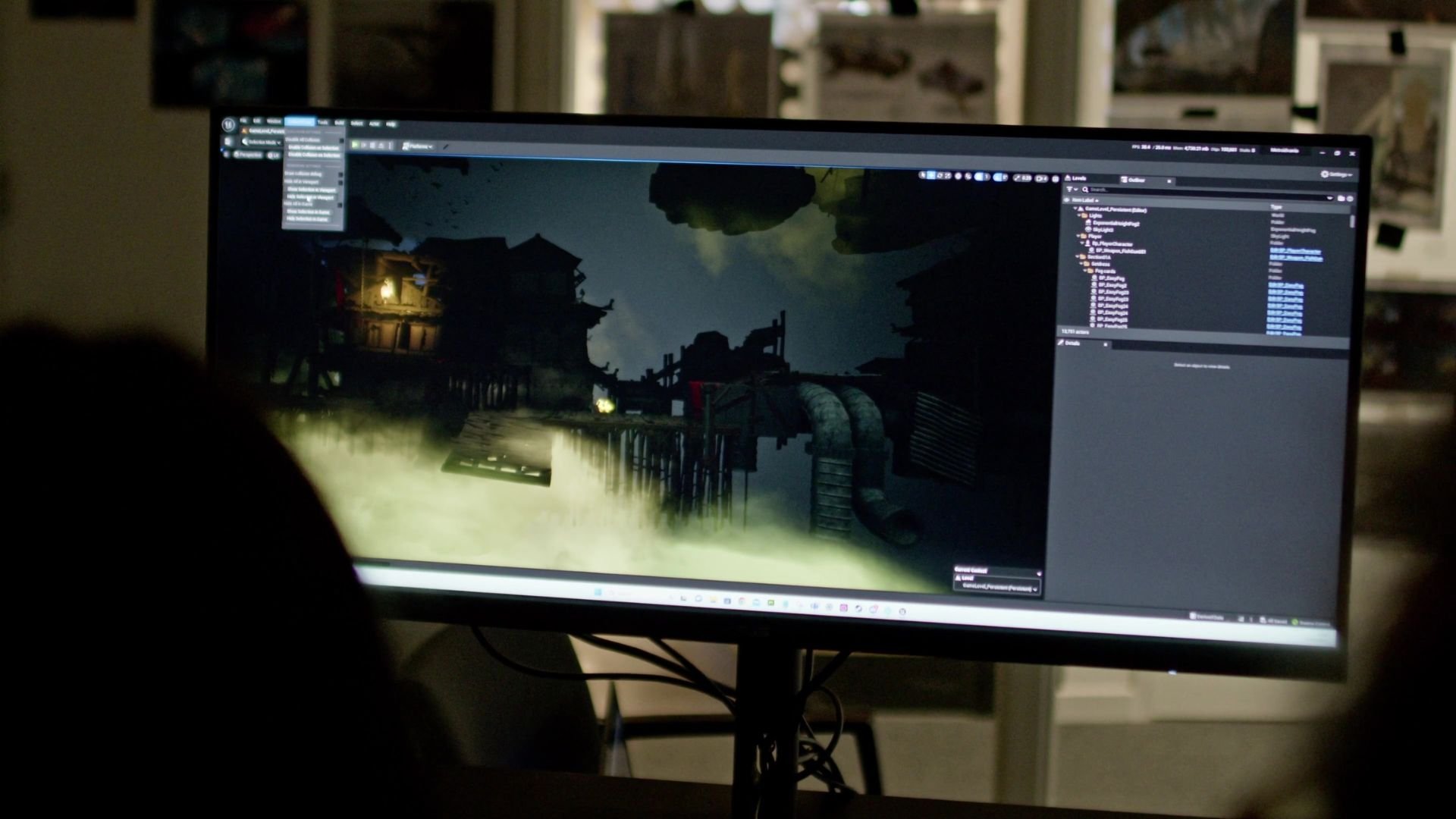
With the ultra-wide ASUS ProArt Display PA348CGV monitor, students have the space to navigate their tools in Unreal Engine
Rembrandt van Leeuwen, a Visual Arts student at Breda University, says he has noticed an improvement in his workflows after using the ASUS ProArt equipment. “I work with characters a lot and I feel that with this screen, with this wide size and high resolution and beautiful colors, I can actually make great concept art for my study.”
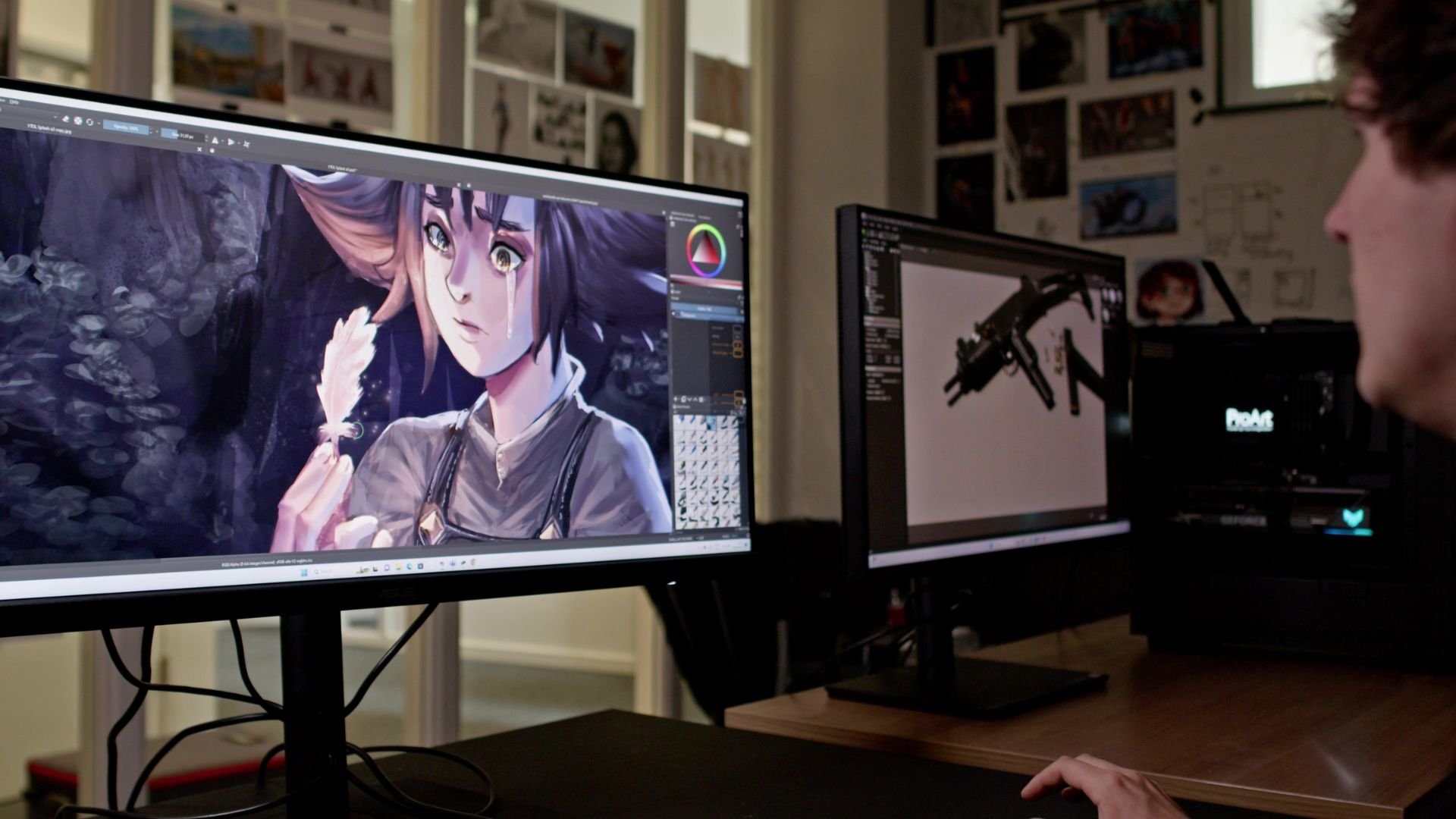
Rembrandt uses the ASUS ProArt Display PA348CGV when working on his character art
BUAS has paired the ProArt displays together with the ALTERNATE workstation powered by the ASUS ProArt motherboard. Within its degree program, students often need to make game trailers for their games, and for that, they need a high-end workstation. The workstation has cut down students’ rendering time by one-tenth, meaning that now students can run their games at the highest quality and resolutions, allowing them to truly benchmark their games.
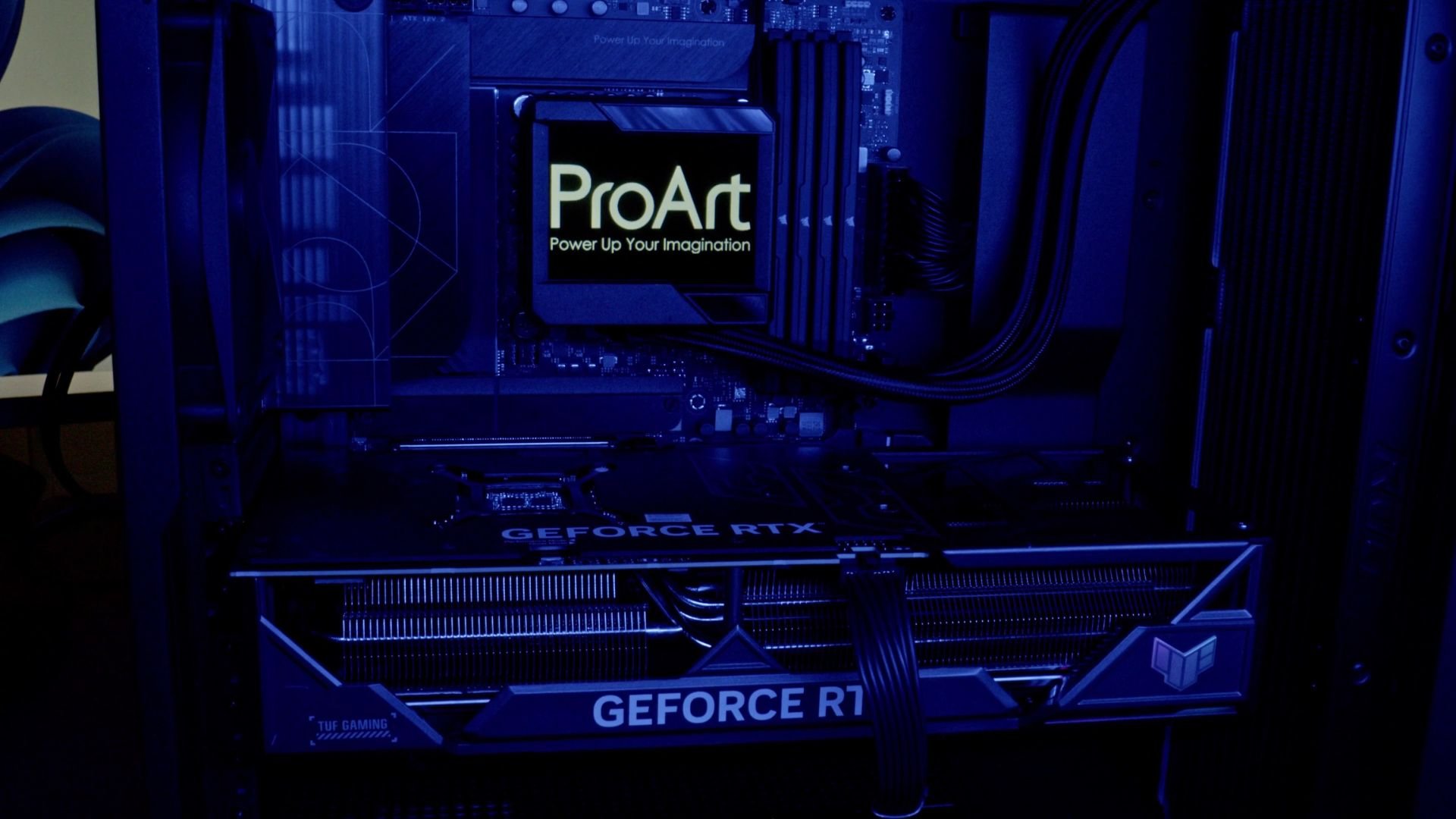
BUAS uses the ALTERNATE workstation powered by the ASUS ProArt motherboard to power out their games
Creating visual assets
Game development is a very technical process. The school uses the ASUS ProArt Display PA32UCR-K monitor when creating game art. Having a 4K HDR monitor with 1000nits of brightness, BUAS has noticed an improvement in its artists' workflow and in overall communication across the teams in terms of color accuracy. Zoran Arizanovic is one of the teachers in Visual Arts at the Games Department. “Adobe RGB color space is the main working environment and with this monitor we can reach 99.5% accuracy, which is perfect for us,” he points out.
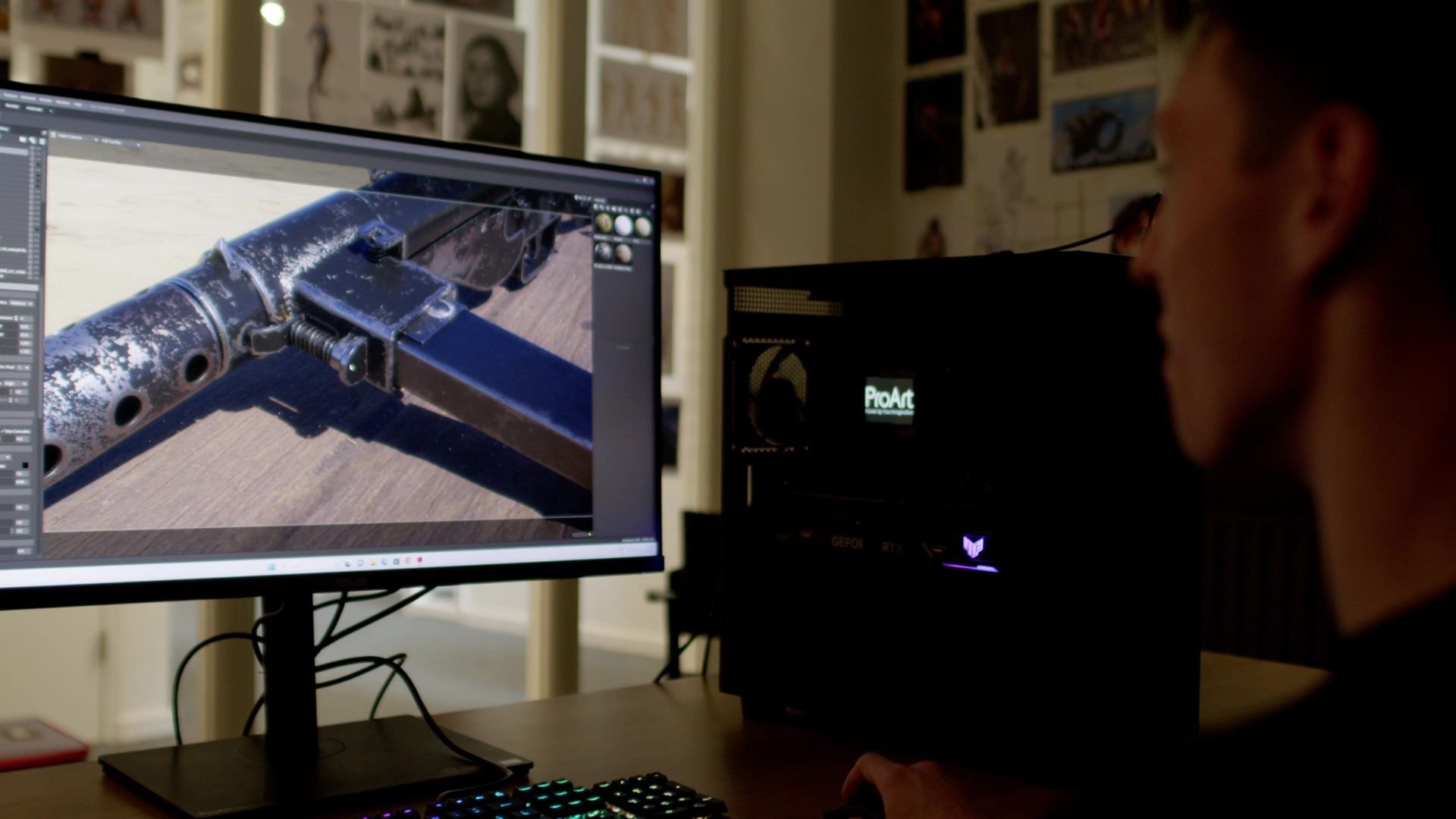
Visual Art student uses the ASUS ProArt Display PA32UCR-K monitor when finishing his game art projects
Reviewing games on a large canvas
Collaborative work is an essential part of BUAS games courses. The school uses the ASUS ProArt A1 projector when presenting its games to a larger audience to view the quality of the product. The Calman-verified projector comes with 98% coverage of the Rec 709 color space, which gives the audience the ability to truly see the students’ games accurately in the highest color representation.
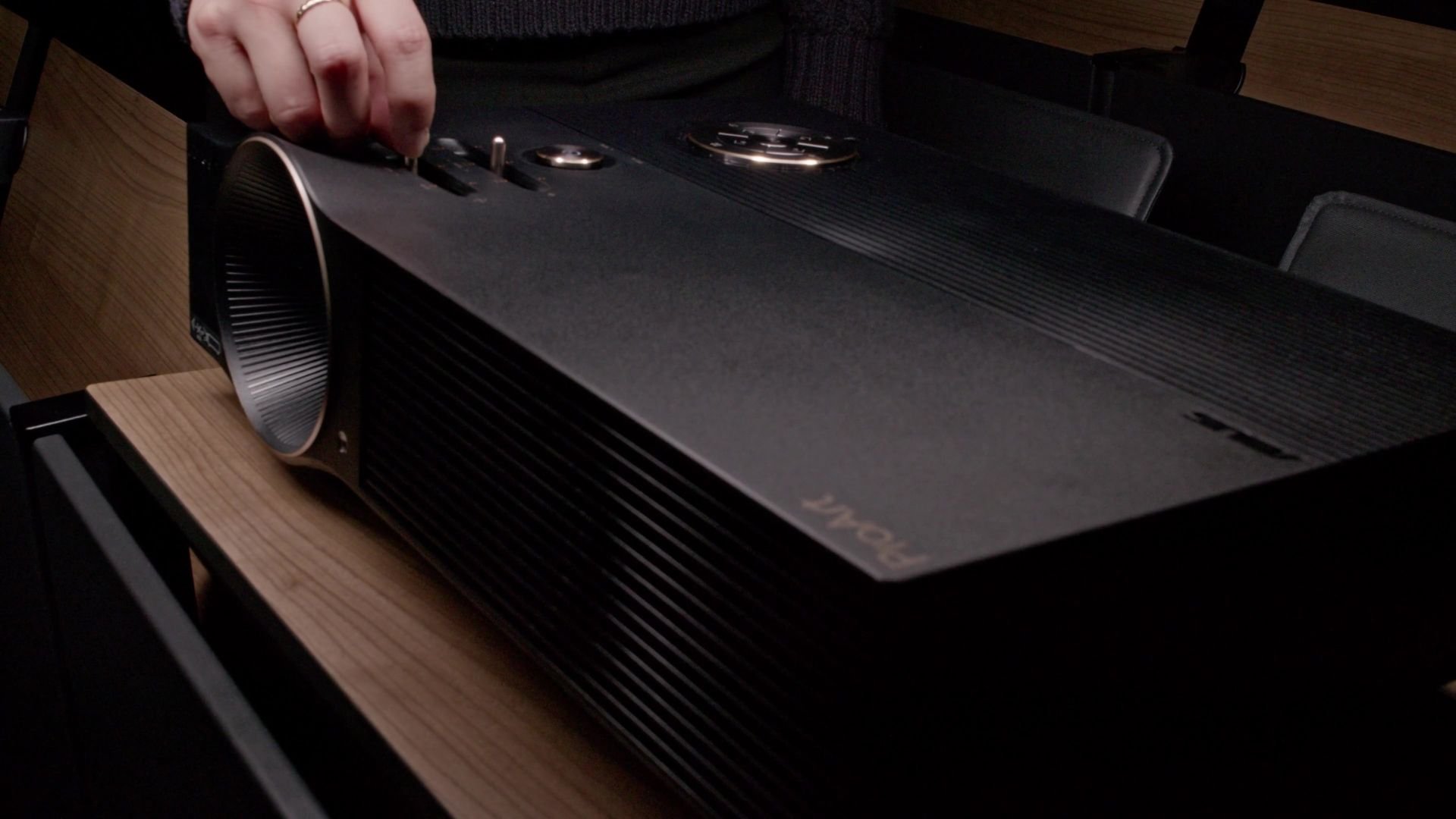
The ASUS A1 projector features 3000 lumens of brightness that gives the students a bright and large picture to review their work
After installing the ASUS ProArt equipment, the games department is now able to have a full workflow starting from Visual Arts to all the way developing their games. This shows us how gaming can be just as creative and powerful art of storytelling.
“The ASUS ProArt equipment will really allow our students to achieve the greatest quality in their games for the future of gaming,” concludes van Oosten.
With so many games ready for adaptation to the movie screen, we don't know what's next - and that is what makes it exciting!
Tags: Production Education


Comments